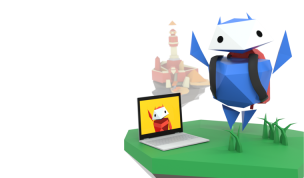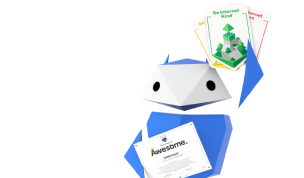When Carli met Harold how Life Ed helped influence a career
Carli started school at Bangor Primary in Sydney’s Sutherland Shire in 1995. One of her fond memories of school life was the Healthy Harold visits.
“I could ask anyone my age and they would remember the Healthy Harold school visits. Harold was a fun learning experience. The no smoking and no drug message really stuck with me even throughout peer pressures. My moral code was definitely embedded in me throughout my primary school education and interactions with Healthy Harold.”
But Carli’s biggest memories of Healthy Harold have a lot to do with healthy eating, which helped to influence her future career.
“Mostly I remember doing the plate activity with the Australian Guidelines to Healthy Eating where we had props of different foods and had to place them into the food group they belonged to. This was followed by discussion around how much of each food we should be eating and a ‘sometimes’ food versus an ‘everyday’ food. I also remember discussing foods containing sugar and what the over-consumption of sugar can do to our teeth and body.
I loved interacting with the Harold puppet, playing games and watching the videos – Healthy Harold made the information sharing fun and engaging.
Carli’s keen interest in health and the human body led her to study health and nutrition, and she now works as a Health Promotion Officer for NSW Health in the Healthy Children’s Initiative team.
“It is so important for parents, carers and teachers to role model good healthy eating behaviours. Children are very much about ‘monkey see, monkey do’, so it is important to practice what you preach. I have always believed that knowledge is power, so I think it is important for children to learn and understand about food and nutrition from an early age to empower them to make their own healthy food choices throughout the lifespan.”
Carli says that not all kids her age were so fortunate when it came to health education lessons.
“When I was at school, there was a challenge around the lack of health education within the school syllabus. I do not remember learning about the body, healthy eating or social issues within the classroom in great detail. We had access to Healthy Harold and external presenters that would come to provide information on topics like nutrition but this was not mandatory. Perhaps, due to a lack of health information being presented in the classroom, it would have also meant that parents of children may have simply not had the information and education they needed to make informed health and lifestyle choices for their children.”
Today Australia’s obesity crisis is at epidemic proportions. Around 26 per cent of children and adolescents and nearly two-thirds of adults are overweight or obese – that’s around 1.2 million children and adolescents and 11.2 million adults.[1]
The obesity crisis is really devastating considering we live in a country where healthy foods, health information and great outdoor areas to be active are available. As parents, carers and teachers, we need to take responsibility and educate ourselves so we can give the best guidance to young people. It is also important to consider those who may be marginalised and recognise that health education is so needed and should be available for all.
“The Life Ed program assists as it has a high and equitable reach of children by being able to access them while they are at school in a learning environment. Its ability to cover a range of topics that may otherwise go without being addressed or spoken about at school or at home is also critical. It encourages children to engage in discussion with their parents around these topics which may help to raise awareness and provide resources for teachers and parents to continue their learning after they finish the program.”









